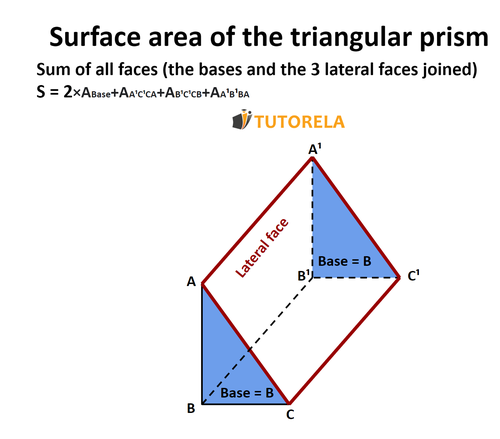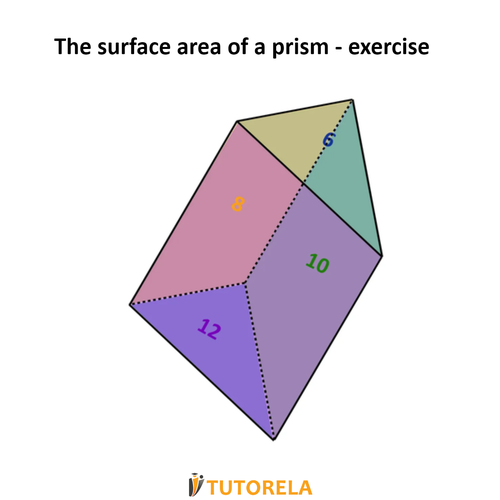The surface area of a triangular prism is actually the total sum of the areas of the two bases of the prism (triangles), and the areas of the three lateral sides of the prism (rectangles).

The surface area of a triangular prism is actually the total sum of the areas of the two bases of the prism (triangles), and the areas of the three lateral sides of the prism (rectangles).

To better understand, let's look at a simple example. In the following drawing, we have a right triangular prism:

The area of each base of the right triangular prism is cm².
The lateral sides of the prism have areas of cm, cm, cm.
The surface area of this prism can be calculated using these data as follows:
So, the surface area of the prism is cm².
If you are interested in learning how to calculate areas of other geometric shapes, you can enter one of the following articles:
and in case you are looking for more information about Triangular Prism, you might be interested in the following articles:
In the blog of Tutorela you will find a wide variety of mathematics articles